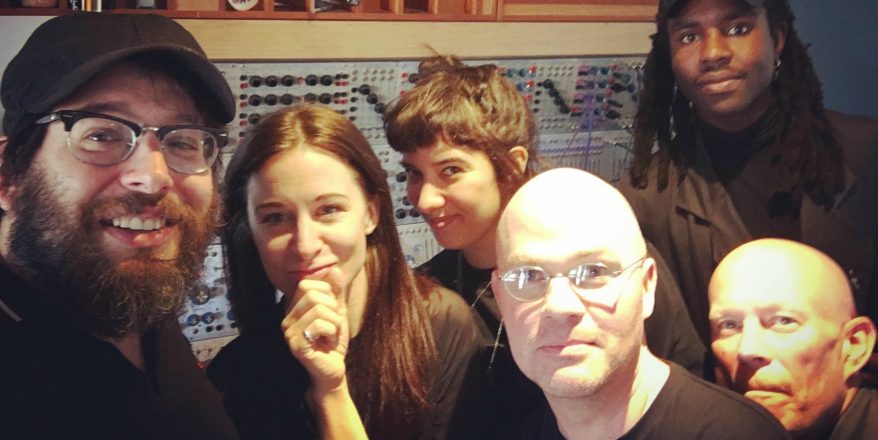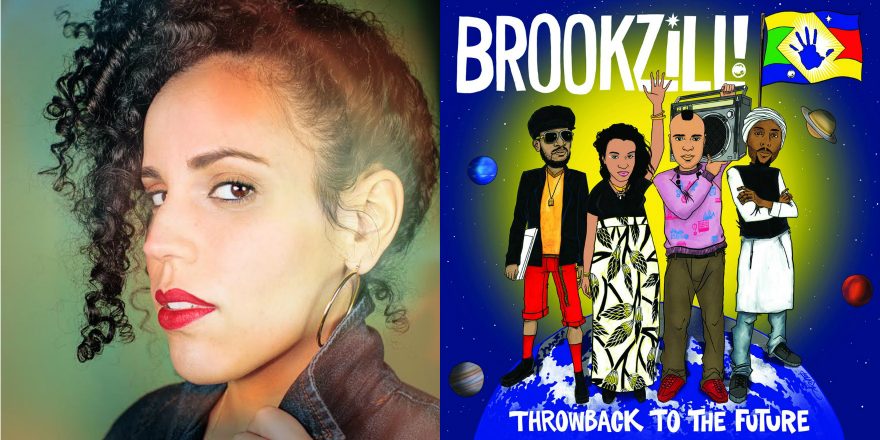“But I got so much ya’ll/You can have it!”
— Solange Knowles, “Interlude: I Got So Much Magic, You Can Have It,” A Seat at the Table
For me, listening to Solange’s new record, A Seat at the Table, has been a gradual peeling away of layers. Her music, her message — the masterful clarity of it all — has left me in awe. It’s hard to grasp, let alone put into words, so I want to be clear that this piece isn’t a review, it’s my reflection. Solange’s album is a window into her multifaceted and complex artistic vision that’s sonically rich and evocative, yet leaves space for the listener. It feels like magic.
Solange’s third full-length album — and her first number one on the Billboard 200 — feels like an instant classic. Orbiting deep R&B, soul, hip-hop, electronic and jazz, it exists as a sonic planet all its own. We’ve been given an invitation to listen in on a continually unfolding conversation that a great multitude has started with themselves — people of color who have been traded, enslaved, oppressed, marginalized, forgotten, written out of history for centuries. The album is an invitation to participate in this conversation, but also sometimes to just listen and admire, because it’s not always about YOU. See: “F.U.B.U” and the lyric “This shit is for us.”
Solange created her masterpiece over the course of four years. There is such a premium on time and release schedules, particularly in the music industry, that most would say taking that much time on an album is definitely ill advised. In fact, the idea of taking your time with anything at all — especially as a woman, and even more so as a woman of color — is outright RADICAL. A few months ago, I kept hearing the phrase “radical self care” and never quite got what it meant. When I finally looked it up I found one of its meanings is the acknowledgment that it’s important to take care of oneself before caring for others. DUH!?! That discovery felt like the ultimate face palm to my soul.

She also brought in talents including Questlove, Patrick Wimberly of Chairlift, Adam Bainbridge, Dev Hynes, Sampha, The Dream and Majical Cloudz, among many others. By masterminding this eclectic group of artists, Solange asserted herself at an intersection of seemingly disparate worlds — from highly regarded players in the “indie scene” to veteran R&B and hip-hop artists and producers. Her vision is multifaceted and complex; that’s what I love most about this album. It’s unapologetically an intimate search and assertion of self.
Last week in a crowded Brooklyn bar I met an extremely gifted artist who described his experience playing guitar on a Tiny Desk Concert with groundbreaking poet and musician Saul Williams. Amid all the noise around us, I leaned in to listen carefully as he spoke softly and deliberately about how the average person is often shocked that he, a black man, can play classical guitar. He says they expect him to be loud, aggressive — maybe even a rapper! Playing quiet acoustic guitar lines feels like a radical action when you look like him in America.
Solange flips the script on how black people are usually portrayed and thus perceived.
Similarly, Solange’s voice throughout most of this album is subtle, breathy and quiet with a slow vibrato that wavers in such a gentle way that it catches me off guard. It makes me almost feel shy, like I’m walking in on someone’s most personal moment of prayer. I never realized how much I needed to hear Solange’s voice until this album arrived. We are all living in this loud, aggressive time full of too many fools shouting hate and absurdities; it makes sense that the sounds we need to hear the most right now are just the opposite of all that.
Solange flips the script on how black people are usually portrayed and thus perceived. “I think that there’s a thread of regality that I wanted to constantly project through the horns, through the sonics of the record, or through the visuals, because we are typically not projected as such,” she said on Saint Heron.
Although it was created in many different locations, including Long Island and New Orleans, the bulk of the songwriting and arrangements for the album found their shape in New Iberia, Louisiana, where Solange’s grandmother was from. In that same interview for Saint Heron, Solange’s mother, Tina Lawson, recounted the story of her parents being run out of town after a mining accident. Reflecting on her return there, Solange says she “felt a strong sense of empowerment learning that they left under the circumstances that they did and that I was able to go back, reclaim that space, and create art and music that reflected their journey.”
Solange tells her mother, “When I felt afraid or when I felt like this record would be so different from my last, I would see or hear another story of a young black person in America having their life taken away from them, having their freedom taken away. That would fuel me to go back and revisit and sometimes rewrite some of these songs to go a little further and not be afraid to have the conversation.”
This family story really resonates with me as a first-generation child of immigrants from Cuba and Puerto Rico — being treated in a way that makes one feel like a foreigner in one’s own town, one’s own country. I’m a descendent of struggle living in a much more privileged manner than my parents did. The ways in which I’m figuratively run out of town or disenfranchised tend to be much more subtle, although I often see my family histories repeat themselves again and again.
We change our last names, we iron our hair, we try to pronounce your English correctly to get rid of our accents.
I see it in family and friends who, despite generations of work, remain financially and culturally oppressed due to the systemic racism that breeds you to work for the big profits of others and stay in the ghettos you were born in. I see it in the lack of access to education and opportunities for people of color, being made to feel that certain things are just “not for us.” We change our last names, we iron our hair, we try to pronounce your English correctly to get rid of our accents, to be accepted as American. Then we find ourselves ridiculed and ghettoized as a “bad hombre” by the poorest billionaire in the world — who happens to be running for president of a country where our fathers and brothers are too often seen only as thugs, criminals and modern-day slaves to this corporate wonderland. And that, my friends, isn’t even the half of it. When I’m still finding my cultural identity, finding my words, finding my voice, finding my brothers and sisters who feel similarly, it’s hard to put thoughts together to even tell you all about it.
Finding power and grace amid oppression and pain — I think that’s the magic mojo I’ve been trying to put my finger on all long, but it always eludes me — and I just realized why. It’s because you can’t put your finger on magic.








